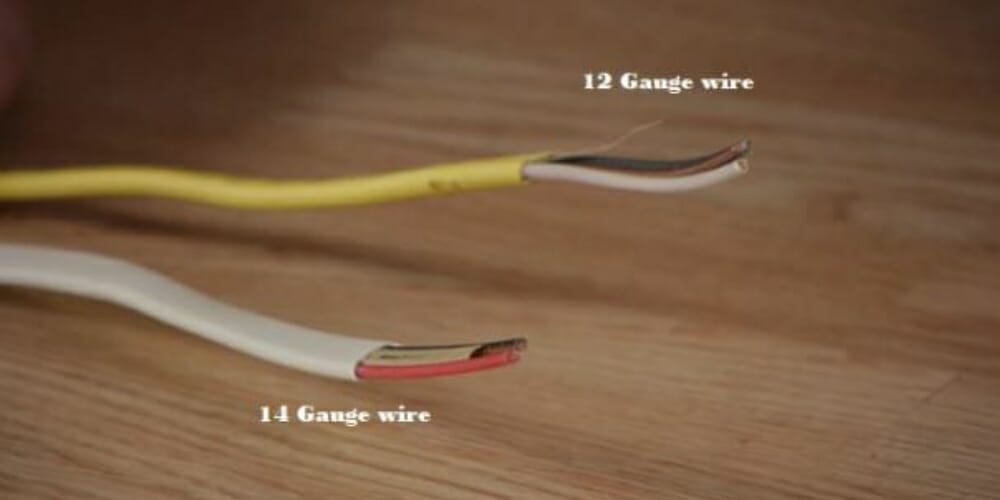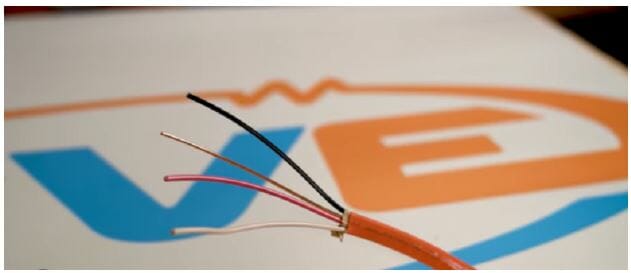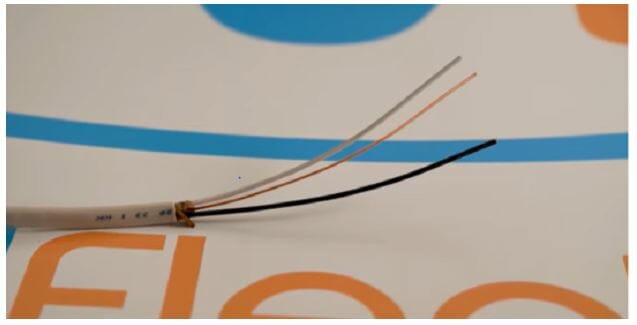How to Tell if Wire is 12 or 14 Gauge (Guide With Photos)

Determining wire gauge (thickness) is essential when purchasing craft or beading wire, as well as wire-made goods such as jump rings, head pins, earring hooks, and other findings. When comparing gauges, the thinner the wire, the lower the gauge number. Taking this into account, selecting the proper gauge cables is critical. When comparing 12 gauge wire to 14 gauge wire, 12 gauge wire is superior.
In general, to tell if the wire is 12 or 14 gauges: 12 gauges are 0.0808 inches or 2.05mm thick, while 14 gauges are 1.63mm. Examine the circuit’s breaker to see if it is a 15-amp or a 20-amp breaker.
The wire is often labeled as 12 gauge or 14 gauge. This article will show you How to Tell whether the wire is 12 or 14 Gauge in more detail.
How to Tell if Wire is 12 or 14 Gauge
Except otherwise specified, the gauge for our goods is computed using the Standard Wire Gauge (SWG) standard (also known as British or Imperial Wire Gauge).
Some manufacturers mark their products using the American Wire Gauge AWG standard (also known as the Brown & Sharpe Wire Gauge), which will be stated in the product description or AWG wire size chart.
With thicker gauges, the difference between SWG and AWG is most apparent (16 and thicker).
Due to an unexpected increase in the price of copper, installers occasionally used aluminum branch circuit wiring in place of copper branch circuit wiring in home electrical systems: copper and aluminum branch circuit wiring, each metal distinguished by its color.
12 Gauge Wire Thickness

In regards to dimension, the 12 gauge wire diameter is generally 0.0808 inches or 2.05 mm thick. The wire gauge refers to the thickness of the wire. The more superior the resistance, the narrower the gauge wire. As the resistance increases, the current flow decreases, and the output voltage across the wire increases.
During electrical conductivity, metal ions collide with moving electrons. They are used in the kitchenette, restroom, and outdoor receptacles, as well as 120-volt air conditioning systems that can take up to 20 amps of gauge wire of electricity.
Generally, the thinner the wire, the more wire that you may join together. A 12 gauge electrical wire is recommended for enhanced power transfer when a high power source is required.
14 Gauge Wire Thickness
The 14 gauge wire diameter is roughly the thickness of a paperclip. A 14 gauge wire has a diameter of 1.63mm and is ideal for a 15-amp circuit breaker.
For almost a century, we have utilized the American Wire Gauge AWG method to measure the thickness of wires.

This approach classifies wires based on AWG wire size chart diameter rather than thickness. These wires have a maximum amperage rating for electric circuits that they can carry without overheating or melting.
Outlets You Can Put on 12 Gauge Wire
There are practical limitations on the number of outlets. However, the suitable and allowed number of outlets that may be connected to a 12 gauge wire with a 20 gauge wire amps circuit breaker is 10.
Circuit breakers in your home’s electrical wire panel function as safety devices. When the current in the circuit exceeds its rating, each device will turn off the power.
Outlets You Can Put on 14 Gauge Wire
Only eight outlets are permitted on a 14 gauge cable. Connecting a 14 gauge wire to a 15 amps gauge wire circuit breaker is only allowed. A 15 gauge wire amps circuit can have unlimited outlets placed.
You will overload the circuit breaker if you utilize appliances that use more electricity than the circuit breaker can manage.
Usage of a 12 Gauge Wire
You can use no special equipment with a 12 gauge wire. A 12 gauge wire, on the other hand, is appropriate for kitchen utensils, bathrooms, outdoor receptacles, and 120-volt air conditioners that support 20 amps.
When connecting to a specific height, you can run a 12 gauge cable for up to 70 feet on a 15-amp circuit breaker. However, on a 20-amp circuit breaker, the peak reduces to 50 feet. Because the gauge of a wire represents the thickness of the conductor that carries the electron flow, the conductor must be capable of lowering resistance while supporting enhanced transmission performance. (1)
Usage of a 14 Gauge Wire
For lights, fixtures, and lighting circuits linked to a 15-amp circuit breaker, you can use 14 gauge copper wire. Remember, as indicated previously in the text, you must also decide how many outlets to join. The cable’s 14 gauge wire flexibility makes it difficult to hold a large piece of equipment for an extended period.
Furthermore, a typical 14 gauge copper wire has a diameter of 1.63mm, resulting in increased resistive heat and overheating while handling higher current. (2)
Take a look at some of our related articles below.
References
(1) electron flow – https://www.sciencedirect.com/topics/engineering/
electron-flow
(2) resistive heat – https://www.energy.gov/energysaver/electric-resistance-heating
